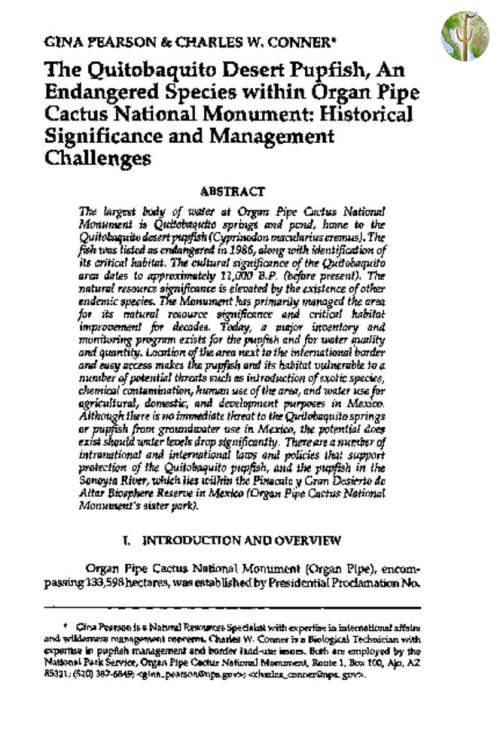The Quitobaquito Desert Pupfish
Date Published or Written
Publishing by
Abstract
An Endangered Species within Organ Pipe Cactus National Monument: Historical Significance and Management Challenges
The largest body of water at Organ Pipe Cactus National Monument is Quitobaquito springs and pond, home to the Quitobaquito desert pupfish (Cyprinodon Eremus). The fish was listed as endangered in 1986, along with identification of its critical habitat. The cultural significance of the Quitobaquito area dates to approximately 11,000 B.P. (before present). The natural resource significance is elevated by the existence of other endemic species. The Monument has primarily managed the area for its natural resource significance and critical habitat improvement for decades. Today, a major inventory and monitoring program exists for the pupfish and for water quality and quantity. Location of the area next to the international border and easy access makes the pupfish and its habitat vulnerable to a number of potential threats such as introduction of exotic species, chemical contamination, human use of the area, and water use for agricultural, domestic, and development purposes in Mexico. Although there is no immediate threat to the Quitobaquito springs or pupfish from groundwater use in Mexico, the potential does exist should water levels drop significantly. There are a number of intranational and international laws and policies that support protection of the Quitobaquito pupfish, and the pupfish in the Sonoyta River, which lies within the Pinacate y Gran Desierto de Altar Biosphere Reserve in Mexico (Organ Pipe Cactus National Monument's sister park).
Synonyms: Cyprinodon macularius, Cyprinodon macularius eremus

